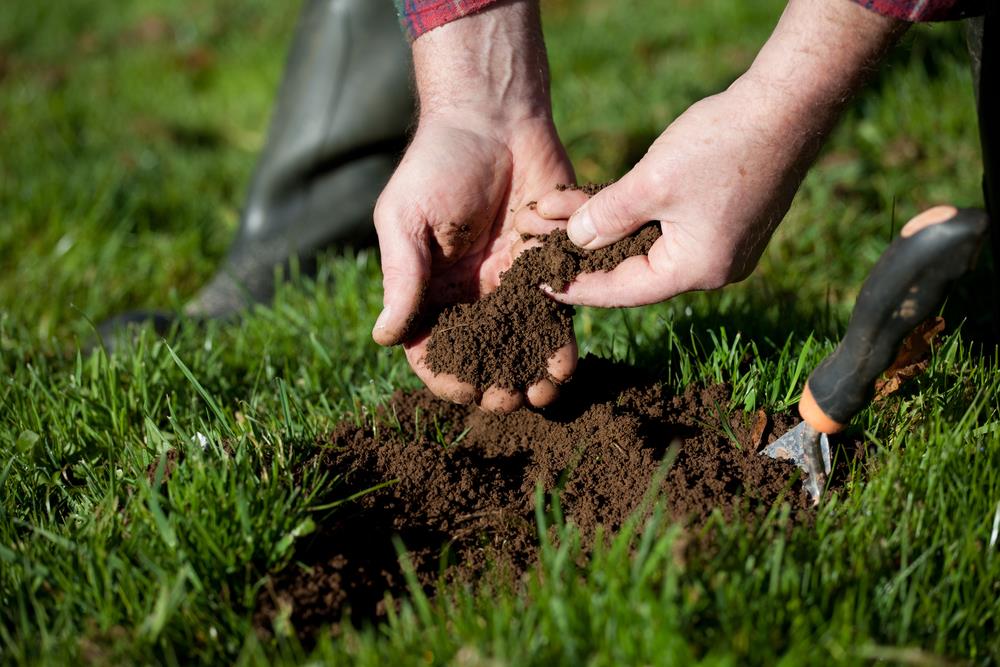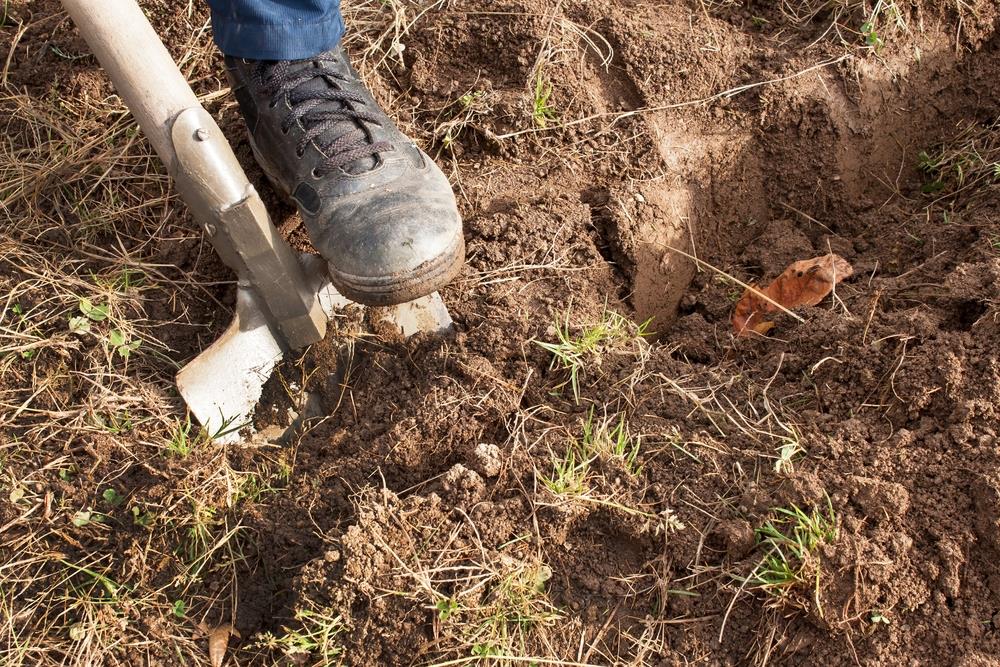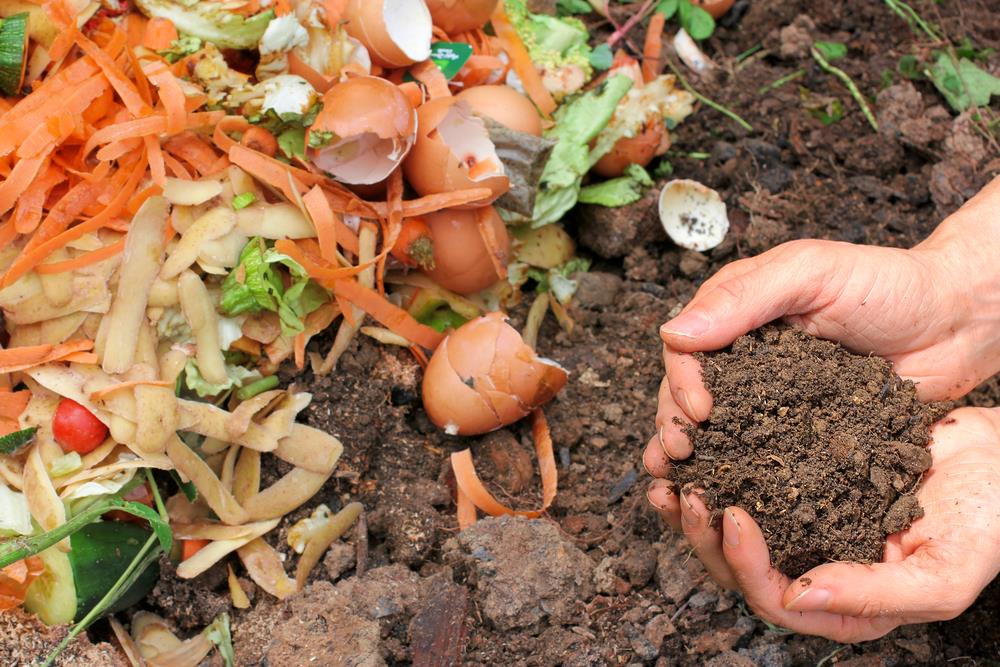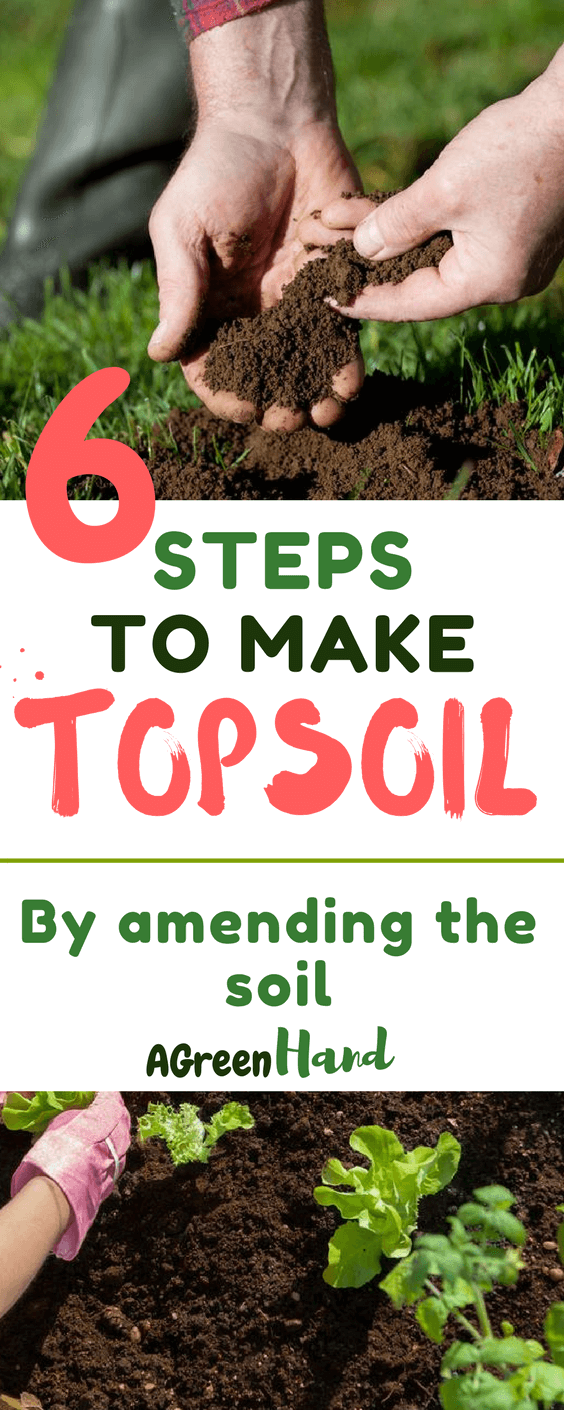Did you know that it takes thousands of years to form just a few inches of topsoil? But, what is more disheartening, is that most places will lose the topsoil way much faster than what it takes to form. Soil erosion and flooding strip the land of this important plant growing soil, and it is one of the contributing reasons why your plants might not do very well.
Since you do not have the time to wait for nature to take its course and create the topsoil that you need for gardening, you need to take some action. And for this, you will need to know how to make topsoil by amending the soil in your garden.
So Why Is Topsoil So Important?
At its most basic definition topsoil is the top layer of any soil, and it is what contains everything that the plants need to grow. It will in most cases cover between 2 and 8 inches.

The topsoil will usually be over a layer of subsoil which in turn is what covers the rock underneath. But, it is noteworthy to know that when your soil is too thin, it might be impossible to distinguish between the topsoil and subsoil.
The greatest benefit of topsoil is that it provides all the nutrients that plants need to grow. Plants will concentrate their roots in this soil layer so as to get these essential nutrients and most will not go deeper than the layer and will instead spread the roots across it. Topsoil also retains water for the plant and contains a rich diversity of life which aids the plant in growth.
How To Make Topsoil
What You Need
- Trowel
- Soil analysis kit
- Pitchfork/potato rake
- Compost heap
- Garden gloves
Step 1: Test You Soil
Before you do anything to your soil, the first thing should always be to test it. Even if you are sure that your topsoil is not the best quality you will not be certain of what to do before you test it. Also, sometimes the soil can still be very healthy and not look like it, and all that you might need is some good tilling.

A soil analysis kit will be helpful when you want to do the test on your own. But, using the services of your local extension officer will not only help get reliable and detailed results but also expert advice on how you can improve or make topsoil.
When doing the test, the first step is to collect about an 8-inch wedge of soil using your trowel. You should then dig out a sample that should be about 1/2-inch deep from your soil wedge. Repeat the sampling as many times as possible in different locations of the garden. Once you are through you should mix your samples thoroughly before testing or sending them to an extension officer or soil test laboratory.
Step 2: Dig Out 8 To 12 Inches Of Soil
After testing the soil and getting the results the next step is where you will need to put in some effort. When amending the soil, you will need to dig out anywhere between 8 and 12 inches of the ground that you want to improve. You should then place the earth in a mound and sift it to remove any large rocks and other objects.

Sifting your soil will also help you determine the composition which together with the test results will help you determine what you need to do. Also, make sure to analyze the content of this top soil.
A good top soil should comprise of 1/3 clay, 1/3 sandy, and 1/3 silty soil. If any of these is deficient, you can easily fix the problem by mixing it into your soil. With the help of a shovel/garden rake, you should be able to mix in these soil essentials thoroughly.
Step 3: Add the Basic Plant Nutrients
If your topsoil is not good, you can always be confident that it will have a deficiency of the essential plant's nutrients. And so once you fix its basic soil type composition the next step should be to add the essential nutrients that your plants will need.

For this, you will need something organic like a sifted compost heap, but you can still use natural or chemical fertilizers if you do not mind them.
Horse manure is also another good choice for the plant nutrients since it is rich in nitrogen which is essential for plant growth. Chicken manure will also be an excellent option as it is also very rich in essential nutrients. But regardless of what source of nutrient you prefer the important thing is to make sure that you mix it well into your soil mound to avoid "burning" plants.
Step 4: Add In The Essential Minerals
The soil analysis result will also indicate results and recommendations for essential nutrients like iron, potassium, phosphorous, copper and zinc because they are all necessary for plant growth. You might also need to improve the level of other minerals like chlorine and sulfur, but this is not always necessary.
Although using compost to fertilize the topsoil might be enough to supply these essential minerals, in some cases you might need to buy fertilizers with potassium, phosphorous and iron since the organic matter might not provide enough. But, the test result should guide you on what and how much to add. Also, make sure that you mix in the minerals well because they can also cause problems if they are too much in one place than the other.
Step 5: Work On The Acidity
As you are testing the soil, it will also be necessary to check the PH, but when using an extension service, you will get this as part of the analysis results. A PH meter will be handy in determining the acidity or alkalinity if you decide to do everything yourself. The right PH will depend on what you intend to plant, but most plants will thrive in slightly acidic soils or those that have a PH of between 6.0 and 6.8.
Since the PH is what will determine the types of plant that you can grow it is necessary to make sure you have an idea of what you would like in your garden before adjusting it. Organic matter can help you get the right soil PH, but in some instances, you will need to use sulfur or lime to work on it.
Step 6: Spread The Mound And Loosen Soil
After adding all the essentials that your topsoil requires the last step is to put it back to the original place. But, when doing this, it is important to make sure that you loosen it so as to encourage oxygen and water to come in with ease. A potato rake and pitching fork are some of the best tools that you can use for soil aeration.

Also, it will be a perfect idea to squeeze a small amount of the topsoil in your hand to test for the moisture. If it clamps without releasing any moisture, it is ideal and ready for plant growth.
Conclusion
Now that you know how to make topsoil you should not have any trouble growing a beautiful and healthy looking garden. But, it is also important to find ways of preserving the topsoil, and some of the best ones include planting trees and cover crops. Also, crop rotation can be helpful, but you will still need to analyze the soil every other season or year and amend the topsoil if necessary.


